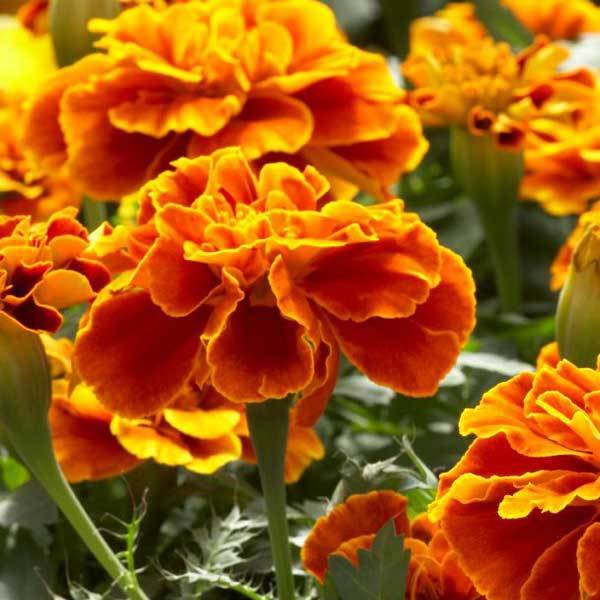
French Marigold
Companion Planting Techniques
Based on some questions that I saw appearing here on Steemit, I thought I'd post an updated companion planting article that I wrote a while back. It's really one of the best ways to deal with pests. These techniques won't guarantee hole free lettuce, but will still help tremendously!
The basic concept of companion planting techniques is the use of various plants to benefit the ecology of the garden. It is used especially to keep various pests away, but also to improve soil conditions, and the flavour of some vegetables (basil improves the flavour of tomatoes, etc.). Having a diverse garden mimics what we see in nature.
The mono crops that have become the standard in farming are very unhealthy for the soil, insects, and all other wildlife. With companion gardens some plants will be flowering at different times and with different flower sizes. This helps to attract a diverse number of small pollinators that will help ensure a successful pollination of your crops.
Attract Pollinators and Predatory Insects
Here is a short list of some great predator insects to have in your garden: Green lacewings, ladybugs, assassin bugs, praying mantis, ground beetles, hoverflies, and damsel bugs.
Predator insects are attracted by the nectar in flowers. They will 'hang out' around the flowers and feed on both nectar and nearby insect pests. These insects act as the security guards of your garden and they never harm your plants. Some of these predatory insects will lay eggs on your plants. The larvae that hatch from these eggs can be voracious predators of pests, such as aphids. The less diverse your garden is the bigger advantage for fruit and vegetable eating pests. You are essentially creating a safe haven for pests if you don't consider ways to attract predator insects.
Toads!
Another great insect predator to attract to your garden are frogs/toads. The main way to do this is simply by providing a water source on the ground, and a moist shelter from the sun. They love to feast on snails and slugs, as well as many other types of insects.
Companion Plants
Basil is an annual herb that can be grown along other larger plants such as tomatoes. Basil will actually improve the flavour of tomatoes and has been used in companion planting with tomatoes for many centuries. Basil will repel pests, such as white flies, mosquitoes, spider mites, aphids, and hornworms. It attracts predator and pollinating insects.
French marigold is a must for companion planting, it will produce a strong chemical to deter pests, such as nematodes. Nematodes attack the root systems of plants. It is so strong that the chemical will still be effective years after the plant is gone. They will repel white flies, some species of beetles, and nematodes.
Mountain mint is a perennial herb that will repel mosquitoes, rodents, fleas, aphids, white cabbage moths, and ants.
Catnip may attract lots of cats to your garden but it is also a very effective pest repellent. It will repel mosquitoes, aphids, various beetles, cockroaches, and much more.
Borage is an annual herb. It will repel the tomato hornworm, and cabbage worm. It helps keep tomato plants healthy.
Greek oregano is a wonderful herb to add to your garden. It is the oregano used for “Oil of oregano”, because it's leaves are loaded with essential oil. It taste great to add to salads. It is great for companion planting as it will attract a large amount of tiny pollinators and predator wasps. These pollinators don't bother humans and the tiny oregano flowers will attract literally hundreds of them. Also, wild thyme produces hundreds of flowers and the pollinators love it as well.
Some plants help to condition the soil enabling the surrounding plants to thrive. The most famous of these are legumes (beans), red clover, etc. Beans and clover help to affix nitrogen from the atmosphere into the soil, and lots of vegetables need a good source of nitrogen. Often people will grow beans with corn and squash. The beans provide the nitrogen for the corn and the squash provides the shade for the soil.
For more information you can continue to read here.